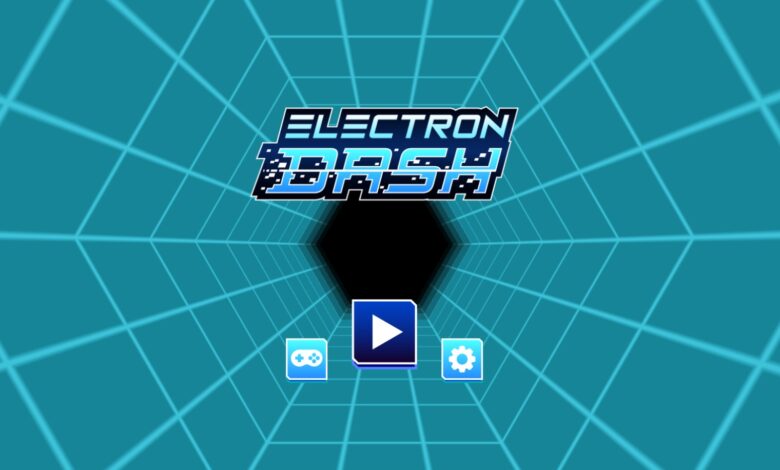Electron Dash: The E-Bike That Makes Commuting Exhilarating

Electron Dash is an open-source framework developed by GitHub for building cross-platform desktop applications using web technologies like JavaScript, HTML, and CSS. It allows developers to build desktop apps for Windows, macOS, and Linux using a single codebase.
At its core, Electron Dash wraps Chromium and Node.js into a single runtime so developers can build apps with front-end and back-end components all using JavaScript. The framework uses Chromium to display the UI while Node.js runs in the background to handle the backend logic.
Some of the key capabilities and features of Electron Dash include:
-
Cross-platform support – Apps built with Electron Dash run on Windows, macOS, and Linux with minimal code changes needed.
-
Leverages web technologies – The UI is built using HTML, CSS, and JavaScript. This allows web developers to easily build desktop apps.
-
Node.js integration – Full access to Node.js APIs for handling backend tasks like working with the filesystem, spawning processes, network calls, etc.
-
Prebuilt packages – Comes with everything needed to build and run an app out of the box including Chromium and Node.js.
-
Main and renderer processes – Apps have a main process that runs Node.js and renderer processes to display multiple windows.
-
Native OS integrations – APIs to access native operating system functions like notifications, menus, dialogs, etc.
So in summary, Electron Dash enables building desktop GUI apps using web technologies by combining Chromium for the front end and Node.js for the back end in a single framework.
History of Electron Dash
Some key milestones in Electron’s development include:
-
April 2014 – Atom Shell is open-sourced. The framework is renamed to Electron in January 2015.
-
May 2016 – Electron v1.0 is released, marking it as stable and production-ready.
-
September 2016 – Slack releases its desktop app built on Electron. This helped showcase Electron’s potential for building production desktop apps.
-
May 2017 – Microsoft announces that it will rebuild Skype and Visual Studio Code on Electron.
-
February 2018 – Electron v2.0 is released with improvements like better Chrome compatibility and native notification support.
-
June 2020 – Electron v10 is released. Electron now follows a 4 week release cycle to keep up with Chromium.
Over the years, Electron has continued to evolve with new features and improvements as a leading framework for building cross-platform desktop apps using web technologies. Major companies like Microsoft, Slack, Twitch, and Discord use Electron for their desktop apps.
Why Use Electron Dash?
Electron Dash has become a popular framework for building cross-platform desktop applications using web technologies like JavaScript, HTML, and CSS. Here are some of the main benefits of using Electron Dash:
-
Write Once, Run Everywhere: With Electron Dash, you can write your app’s codebase once using web technologies and it will run natively on Windows, Mac, and Linux. No need to build separate native apps for each platform.
-
Leverage Existing Web Skills: Since Electron Dash apps are built using web technologies, you can leverage your existing skills in HTML, CSS, and JavaScript. If you know how to build a website, you can build a desktop app.
-
Native OS Integration: Electron Dash apps have access to native OS APIs and features like the file system, system notifications, dialog boxes, etc. This allows for deeper integration with the OS compared to a web app.
-
Easy to Package and Distribute: Electron Dash handles packaging your app into executables that can be easily distributed to end users without requiring them to install additional runtimes or dependencies.
-
Active and Supportive Community: Electron Dash has a large community of developers contributing libraries, tools, and guides. This makes it easier to find solutions when building your app.
Overall, Electron Dash reduces the complexity of building desktop apps across platforms. Compared to building truly native apps in Swift/Objective-C, Java, C# etc., Electron Dash makes it much easier to get started and leverage web technologies that many developers are already familiar with.
Installation and Setup
To install Electron Dash on your system, you’ll need Node.js installed first. You can download and install Node from nodejs.org. Once Node is installed, you can install the electron command line tool globally like so:
npm install electron -g
This will add the electron command to your system PATH.
Next, you’ll want to create a new folder for your Electron app and initialize it:
mkdir my-electron-app
cd my-electron-app
npm init
This will create a package.json file to manage dependencies.
From here, you can install Electron locally and save it as a dependency:
npm install --save-dev electron
Once Electron is installed, your environment is all setup and ready to start building!
Creating Your First App
The main entry point for an Electron app is the main.js file. This will create the main browser window.
A simple main.js looks like:
const { app, BrowserWindow } = require('electron')
function createWindow () {
const win = new BrowserWindow({
width: 800,
height: 600
})
win.loadFile('index.html')
}
app.whenReady().then(() => {
createWindow()
})
This will create an 800×600 window and load index.html into it.
The index.html file will contain the actual UI and content of your app. You can use HTML, CSS and JavaScript to build out the interface.
An example index.html:
<!DOCTYPE html>
<html>
<head>
<title>My App</title>
</head>
<body>
<h1>Hello World!</h1>
<p>Welcome to my first Electron app.</p>
</body>
</html>
With these two files, you can already run and test your app locally using:
electron .
Key Concepts
Some key concepts to understand when building Electron apps:
- The
mainprocess powers the backend, while therendererprocess displays the UI. - The main process creates and controls web pages (BrowserWindows) to display UI.
- Use Electron APIs like
app,BrowserWindow,Menuetc. in main process. - Use web APIs like HTML, CSS, JavaScript in the renderer process.
- IPC communication allows processes to send messages to each other.
This should give you a general idea of how to get started building apps with Electron!
Main Features and APIs
Electron Dash enables you to build desktop applications using HTML, CSS and JavaScript. It provides a runtime with rich native operating system APIs.
The architecture consists of a main and renderer process. The main process runs a Node.js instance and is responsible for controlling system-level features like the file system and creating browser windows. The renderer process runs for each window instance, handles the web page logic, and has access to web APIs as well as some Electron APIs.
Some of the key capabilities provided through Electron’s APIs:
-
Windows – Create and control browser windows, set properties like icon, title, size, etc. Handle window events.
-
Menus – Create application menus, context menus. Define accelerators, enable menu items conditionally.
-
Notifications – Send system notifications using the Notification API similar to the web API.
-
Dialogs – Open file, save file, error dialogs.
-
Tray – Create icons in the operating system taskbar.
-
Shell – Interact with the OS shell, open external applications.
-
Clipboard – Copy and paste operations.
-
Desktop – Get screen size info, monitor changes. Open external files and URLs.
-
Web Contents – Customize and control web page rendering.
-
Protocol Handling – Register the app as the default handler for custom protocols.
-
Auto Updates – Automatically update app versions.
-
Native Node.js Modules – Use native modules directly instead of their web API counterparts.
-
Security – Configure content security policy and disable remote module usage.
The renderer process can access Electron and Node.js APIs to deeply integrate with the OS, while still using web technologies to build the UI. This allows creating desktop apps with web skills.
Building Cross-Platform Desktop Apps
Electron enables developers to build cross-platform desktop applications using JavaScript, HTML and CSS. This allows you to develop apps for Windows, Mac and Linux using web technologies that many developers are already familiar with.
Some key advantages of building cross-platform apps with Electron:
-
Write code once that runs on multiple operating systems. Don’t have to maintain separate codebases.
-
Use common web APIs like DOM and CSS without needing a browser. Electron bundles Chromium and Node.js.
-
Package and distribute apps to app stores on different platforms. Electron handles updates seamlessly.
-
HTML and CSS give you flexibility for UI design. Create highly customizable user interfaces.
-
Access powerful native OS APIs like file system, clipboard, etc directly from JavaScript.
Distribution and Updates
For direct distribution, Electron provides autoUpdater API to enable apps to self-update with new versions. When you publish a new release, the app can compare versions and download the latest code.
Building for Specific Platforms
There are some platform-specific considerations when building Electron apps:
-
Mac: Follow MacOS interface guidelines. Support special keys on Mac keyboards. Set correct app name, icon, etc.
-
Windows: Installer needs to be signed on Windows. Handle dialog popups differently on Windows. Support shortcut keys and Windows-style notifications.
-
Linux: Package apps properly for different distros. Pay attention to dependencies. Handle different versions of libraries.
Overall, Electron makes cross-platform development very convenient. With a few platform-specific tweaks, you can have a high quality app running on Windows, Mac and Linux from a single codebase.
Debugging and Troubleshooting
Debugging and fixing issues is an inevitable part of building desktop apps with Electron. Here are some common problems developers face and how to solve them:
Common Issues
-
App crashes or throws errors on startup – This is often caused by code errors or incorrect usage of Electron APIs. Review your main process and renderer code for bugs.
-
Blank window on launch – Verify that you have created a browser window and are loading an HTML file. Check that the window dimensions are valid.
-
GUI elements not appearing – Double check you have correctly identified DOM elements and are accessing them properly.
-
Use profiling tools to detect leaks.
-
Node.js integration issues – Ensure Node APIs are only accessed from the main process. Use IPC for renderer/main communication.
Debugging Tools
-
Chrome DevTools – Debug renderer processes and interface just like a web page.
-
Electron Developer Tools – Debug the main process similar to Node.js apps.
-
Visual Studio Code – Excellent built-in Electron debugging extensions.
-
Node Inspector – Debug Node.js threads in Electron’s main process.
Fixing Crashes
-
Use
try/catchblocks around potentially unstable code. -
Handle all uncaught exceptions in the main process.
-
Log and monitor crashes with Crash Reporter.
-
Reproduce crashes locally for debugging.
-
Check for common crash causes like native module issues.
Performance Issues
-
Profile CPU and memory usage with Chrome DevTools.
-
Debounce rapid events like window resizes.
-
Load resources asynchronously and lazily.
-
Minimize main thread usage on startup.
-
Use Electron’s main and renderer processes properly.
Debugging Electron apps takes time but gets easier with experience. Follow best practices, use available tools, and always handle errors and crashes gracefully.
Security Considerations
Electron applications come with certain security risks that developers should be aware of. Some key things to consider:
Potential Security Risks
-
The Electron framework provides Node.js integration, which could expose vulnerabilities if not properly secured. Apps should be careful about what Node APIs they expose.
-
Electron’s power comes from full access to the operating system. This allows more opportunities for malware if not programmed defensively.
-
Apps can package arbitrary executable code, which could include viruses and spyware. All code should be vetted before packaging.
-
Electron doesn’t sandbox processes by default. An app’s renderer processes have the same privileges as the main process unless manually sandboxed.
-
Apps could expose privileged APIs to untrusted content through preload scripts. Access should be limited.
-
Remote content loaded in WebViews could execute arbitrary code outside the sandbox, if not properly isolated.
Best Practices for Secure Electron Apps
-
Only enable the minimum OS privileges needed. Avoid exposing admin/root whenever possible.
-
Sandbox renderer processes using the
sandboxoption. Limit their access to OS resources. -
Validate all external data and input before passing to sensitive APIs. Sanitize and escape.
-
Use
ses.setPermissionRequestHandler()in webContents to limit WebView capabilities. -
Sign your application so users can verify authenticity. Check signatures before auto-updating.
-
Use
asararchives to prevent tampering with app source code. -
Set Node integration to false where possible and limit available Node modules.
Sandboxing and Isolation
-
Use the
sandboxoption to enable OS-level sandboxing in renderer processes. -
Consider using multiple isolated renderer processes for higher security.
-
Use the
contextIsolationoption to run Electron APIs and scripts in isolated contexts. -
Preload scripts can be used to provide limited access to Electron APIs in sandboxed renderers.
-
Chromium’s out-of-process iframes can sandbox untrusted code inside WebViews.
Proper sandboxing, isolation, and following security best practices will help make Electron apps more secure. Validate all external input, limit privileges, and isolate all untrusted code.
Notable Apps Using Electron
Electron has become a popular framework for building cross-platform desktop apps in recent years. Many well-known apps leverage Electron to deliver the same experience on Windows, macOS, and Linux. Here are some examples of popular Electron apps and how they utilize the framework’s capabilities:
Visual Studio Code
Microsoft’s lightweight and customizable code editor is built on Electron. The use of web technologies like Node.js and Chromium in Electron allowed the Visual Studio Code team to build the app with familiar web development skills. Electron provided out-of-the-box support for auto-updates, crash reporting, and native menus across platforms.
Slack
The popular team communication app uses Electron to wrap their existing web app into a native desktop experience. Slack chose Electron so they could use existing frontend code while gaining access to OS-level integrations like notifications, spellcheck, and drag-and-drop support. The app takes advantage of custom native menus and keyboard shortcuts only possible in Electron.
Discord
Discord is another communication tool that leverages Electron for its desktop application. The app is essentially a browser window to their web app but gains native OS integrations like notifications and media keys. Using Electron allows Discord to rapidly iterate on the desktop app while maintaining feature parity with the web version.
Atom
GitHub’s hackable text editor Atom is open-source and built on Electron. Atom was one of the first major apps to showcase Electron’s capabilities for building cross-platform desktop apps using web technologies. It uses Chromium for display and Node.js integration to enable a plugin ecosystem and customization.
So in summary, these popular apps chose Electron to leverage web development skills while gaining access to native capabilities on desktop. Electron enabled faster and more unified development across platforms.
The Future of Electron Dash
Electron has an exciting roadmap that will enable developers to build even better cross-platform desktop apps. Some key updates in the near future include:
-
Improved performance and efficiency: The Electron Dash mobile app team is focused on reducing the memory footprint and startup times for Electron apps. This will result in faster launch times and smoother performance, especially on low-powered devices.
-
Enhanced security features: Security continues to be a top priority. Upcoming versions will add improved sandboxing, secure protocols, and vulnerability mitigations. This will help developers build secure desktop apps.
-
Closer integration with the web: Tightening the integration between Electron and web technologies like CSS and JavaScript will enable more seamless development across platforms. Features like native browser windows and webview tags are bringing Electron closer to the web.
-
Support for new platforms: Electron is expanding from Mac, Windows, and Linux support to include new platforms like ChromeOS and mobile operating systems. The potential to turn web apps into mobile apps using Electron is exciting.
-
Improved desktop/mobile convergence: Building one app that works seamlessly across desktop and mobile is the holy grail. Electron’s expanding platform support and web-based architecture is steadily improving the ability to build converged desktop/mobile apps.
-
Simplified app distribution: The Electron Forge and Electrino tools make it easier to package and distribute Electron desktop apps to end users. This improves accessibility for non-technical users.
As Electron evolves, it will cement its role as the leading framework for building cross-platform desktop apps using web technologies. The future is bright for Electron to power the next generation of desktop application development.





